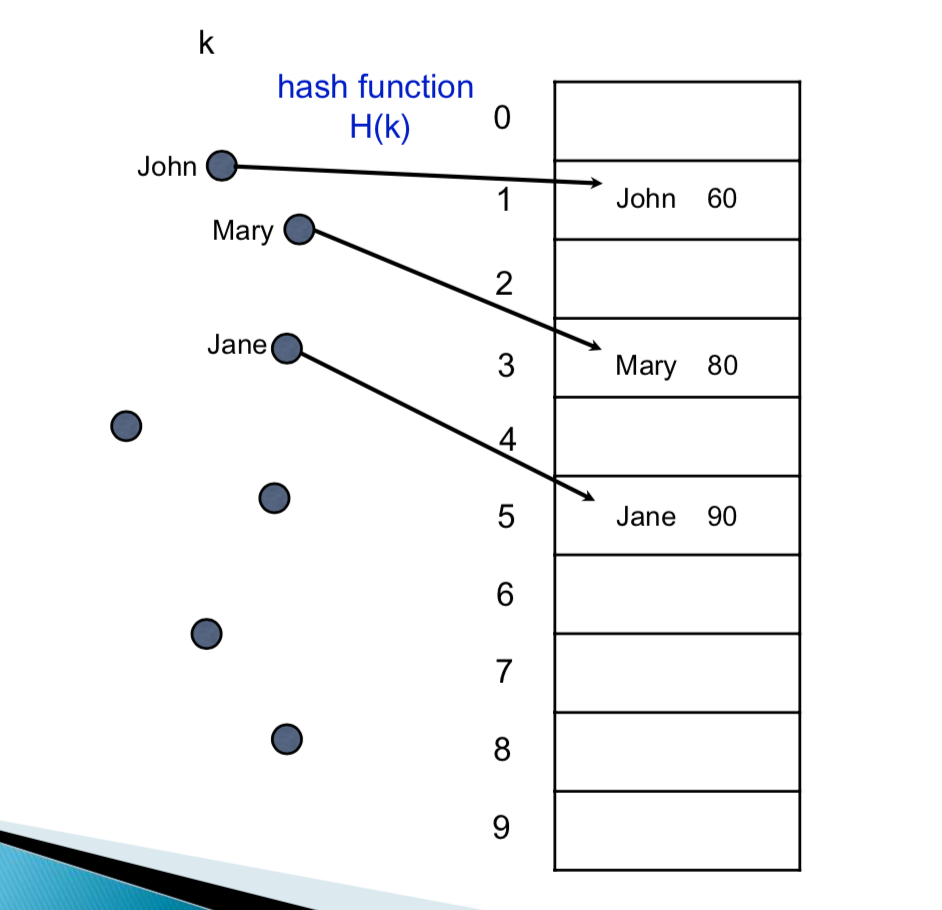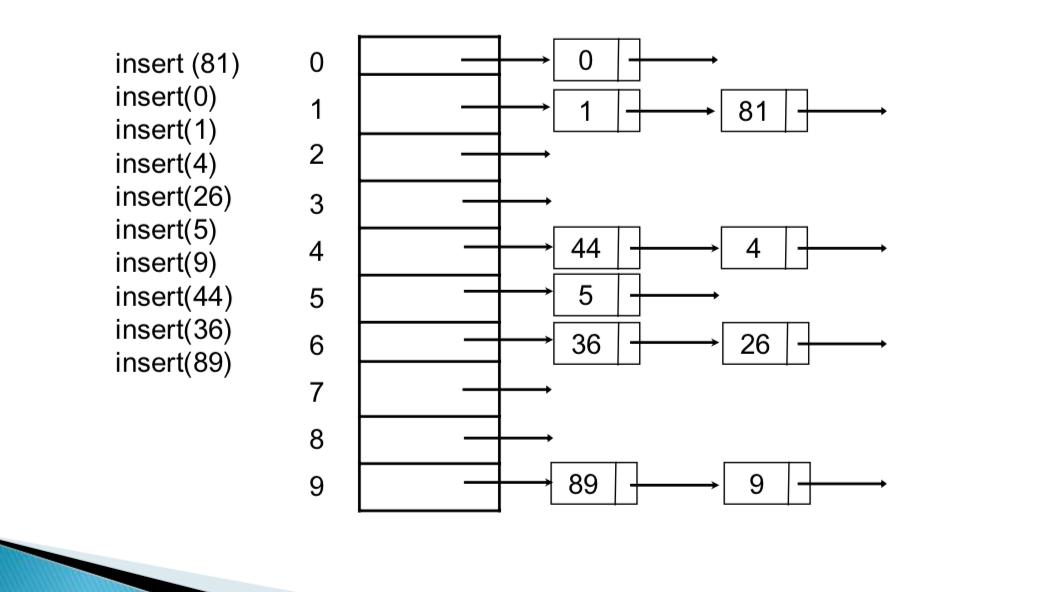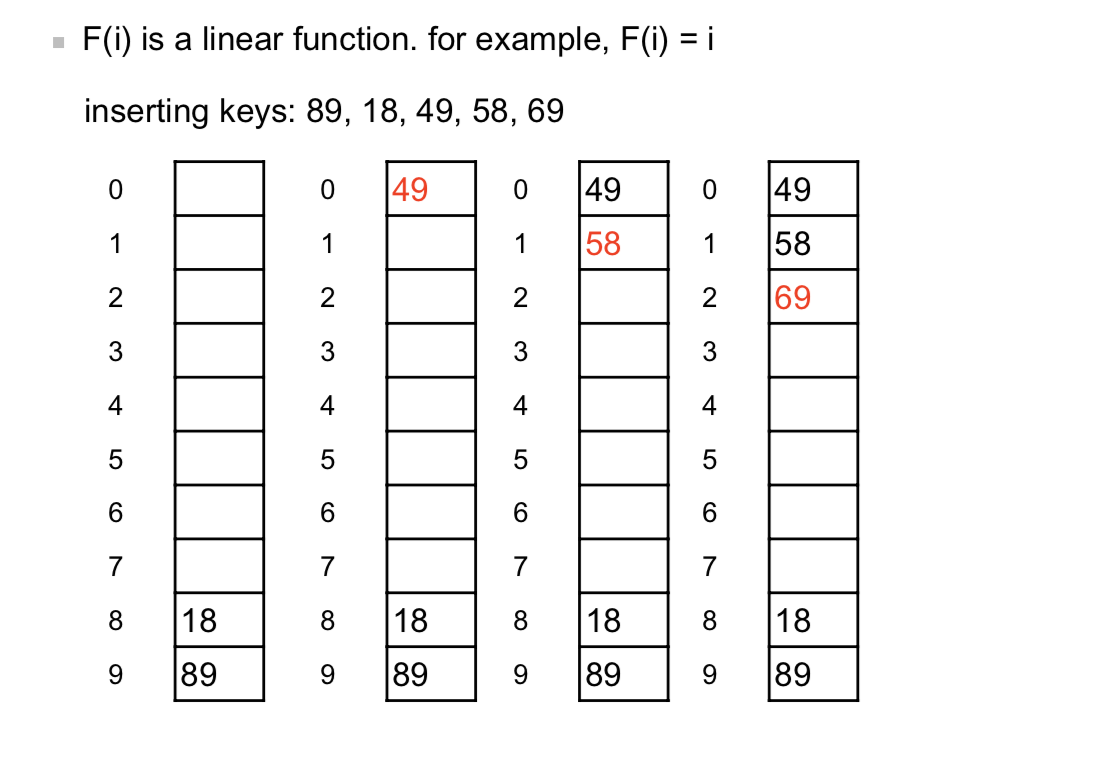Hasing
: technique used for performing insertion, deletion, and finding in constant time
1. ADT
Collection of pairs
- pair : (key, element)
- each pair have unique key
Operations
- search(key)
- delete(key)
- insert(key, element)
2. Static hasing
- hash table is an array of fixed size, containing the keys
- hash function maps each key to some cell in the hash table

3. Resolving Collision
collision : occurs when different keys are mapped to the same cell
1. separate chaining (open hasing)
- keep a list of all elements that hash to the same value
- needs extra space and operation for pointers and new nodes

2. open addressing (closed hasing)
- if a collision occurs, alternative cells are tried until an empty cell is found

4. Dynamic hasing
: The hash table is broken into a number of smaller hash tables, each is called a bucket.
locality is important for large data structure
since disk access is costly but memory access is cheap
- To find which bucket to search for, we store a data structure called directory in main memory, and each entry in the directory holds a disk address of the corresponding bucket.
- Each bucket can hold as many records that can be fit in one page, and we will try to keep each bucket at least half full.
